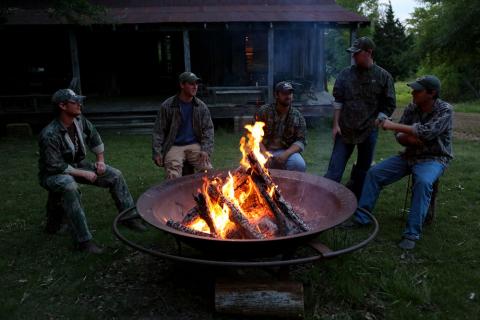Brad Farris & Scott Bestul | Originally published in GameKeepers: Farming for Wildlife Magazine. To subscribe, click here.
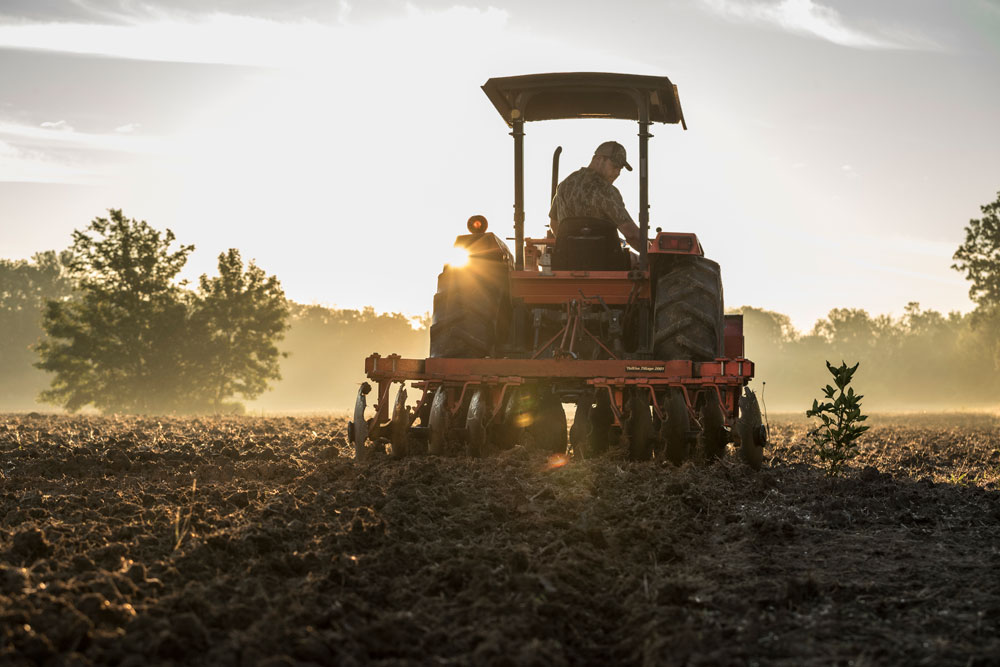
Viewers of Primos’ “The Truth” videos and television show know that Brad Farris enjoys a host of memorable deer hunts each year. But a particular whitetail stands out in Farris’s mind. “It was December 8th, 2005 and we were hunting a remote food plot,” he recalls. “Eight does had come out to feed, and it wasn’t long before a really nice 8-point came out to chase them around. Eventually he came close enough for a shot, and I was fortunate enough to harvest the buck.”
While Farris was certainly pleased with the size of the buck, and even more excited about the fine video footage of the hunt, the whitetail symbolized an even greater reward. “I helped plant and care for that food plot,” he says. “From the time we saw the buck until I shot him was five minutes, tops. But that hunt made our weeks of work worth all the effort. In my mind, being able to harvest a deer on a food plot you’ve planted is about as good as it gets.”
Those are strong words, coming from a man with a string of trophy whitetails to his credit, many of them taken far from Farris’s Mississippi home. But to the amiable video star, chasing bucks in far-flung places ranks behind working on habitat for deer he can drive to. Whether he’s sowing a food plot or improving native habitat, Farris likes to see dirt under his own fingernails, and he spends hundreds of offseason hours ensuring that the farms he hunts are as attractive as possible to deer. What follows, then, is a glimpse at five proven strategies which have worked for Farris and the Primos team, and how you can make them work on your property.
Strategy One: Improve Natural Foods
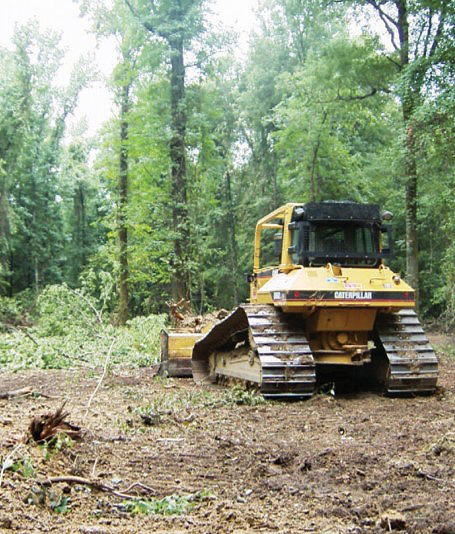
to remove poor-quality trees and add beneficial trees that help you
meet your goals.
Food plots are certainly effective and steal most of the deer-management headlines, but Farris insists they’re only part of the puzzle. “I think managing the natural browse on a property is a critical step many guys overlook,” he says. “Our goal is to provide what deer need “year-round,” and for much of the year they’re keying on browse or other natural foods. Improving those food sources is a big consideration no matter where your property is located.”
As an example, Farris notes that on one southern farm he helps manage, dewberry had traditionally been a huge summer food choice for deer. “Unfortunately, that species was lacking on this farm,” he recalls. “There were too many deer to start with, and they had virtually eliminated dewberry in some spots. So our first step was to simply shoot a bunch of does so the dewberry could jump back. Then we did a select cut of timber that made conditions favorable for dewberry to grow. It’s amazing how quickly it jumped back, after that.”
Strategy Two: Timber Time
Trees represent more than just a convenient stand site; they provide food and cover for deer, as well as being a valuable source of income for any property owner. Farris and the Primos crew do their best to manage timber with both short term and long-term goals in mind. “On one farm we have, there are several areas of poor-quality trees, mostly gum and ash,” he says. “So we’ve clear-cut them, using smaller cuts of 10-24 acres. Then we came back in and planted hardwoods in the cuts. In the short term, those areas will provide excellent bedding cover, but as the hardwoods grow they’ll provide nutrition for the deer and timber in the future.”
Obviously, many hunters lack the expertise to properly manage timber, a process requiring careful thought and planning, never mind the logistics of setting up and executing a logging operation. Farris says working with a consulting forester is the ticket. “I like a guy with a hunting background, so I know he understands our goals and can offer advice for achieving them. Still, we try to be an active part of the process; I like to flag all the cuts myself, as well as visit any logging operations in progress.”
Farris says that proper timber harvesting is not only good for whitetails and the forest itself; it can create killer hunting setups for years to come. “Our basic goal is to make deer walk,” he says. “We try to situate clear cuts and other thick stands of timber (where deer will bed) away from major food sources. So we’ll never make a clear cut right at the edge of a big corn or soybean field; you’ll never be able to hunt those deer because they’ll be bedding tight to the food.
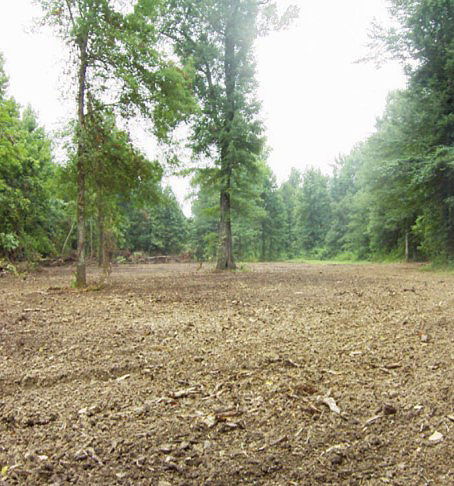
there are plenty of options for stand placements to play different
winds.
“Another thing we do is to creating corridors — 60-foot strips of mature, open timber — between clear cuts. Bucks love to travel the edge of these corridors because they’re easy walking and they feel safe being so close to thick cover. And I can get in those corridors quietly and set up without spooking deer. We lay them out with differing wind directions in mind so that, no matter what the wind is on a given day, we have a good place to hunt. Those corridors are killer spots to get on a big buck!”
Strategy Three: Food Plot Finesse
Food plots are a popular and obvious choice for keeping deer on a farm and providing hunting opportunity. Farris divides food plots into two categories.
“Any large fields we consider destination food plots where deer will get the bulk of their nutrition,” he says. “Deer use them mostly at night, so they don’t represent a perfect hunting situation until late in the season when it’s really cold. Corn and soybeans are good bets for these plots, and BioLogic has several blends for the average guy who isn’t a farmer.”
In addition to these larger plots, Farris plants smaller plots designed to be small feeding/staging areas deer use en route to the bigger fields. Like the timbered travel corridors mentioned above, these smaller food plots are laid out carefully and with prevailing wind directions in mind. “I like to keep them hour-glass shaped,” Farris notes. “And I make sure there’s a group of [stand] trees on each end so I can hunt that spot in more than one wind. We also try to stay out of them for much of the pre-rut, so that does will feel safe and continue to feed in them throughout the rut.”
Farris has a couple of pet picks for planting these smaller hunting-type plots. “Clover Plus is awesome,” he says. “It comes up quickly and provides so much food so fast. Plus it’s one of the first things to green up in the spring, when deer are really hungry. I also like BioLogic Maximum, which is a blend of brassicas. It offers deer something throughout the fall and it’s one of our favorite food plot types for December and January in the Midwest. One of our hunters, Keith Burgess, watched 24 bucks come out into one Maximum field in Iowa last year!”
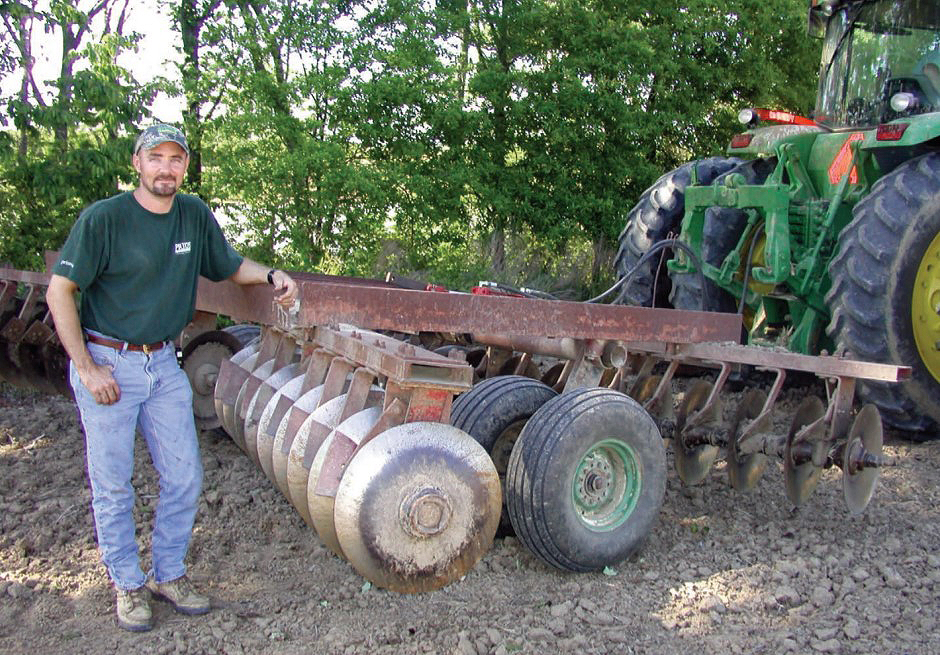

Strategy Four: Maintenance and Troubleshooting
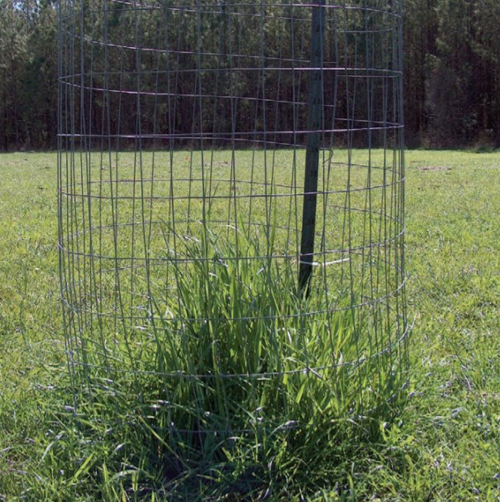
utilization cage will reveal to you the potential of your plants compared to
what your herd is consuming.
Like many savvy food plotters, Farris recognizes that attracting deer involves much more than simply getting some seeds in the ground. “There are so many details to pay attention to in order to get the most out of your food plots,” he says. “Soil testing to analyze pH is critical to preparing the soil and maximizing seed growth. And people need to realize it’s a long-term process. Elevating pH can take a couple of years, though using pelletized lime will give you a quick fix for the season.”
Maintenance is also important. “Clipping clover fields keeps the plant palatable to deer and keeps the weeds down,” Farris says. “You can’t ignore these fields. We go in June and clip them; we take off just the top 1/3 of the plant, and if we’re concerned with weed growth we’ll spray the field with Weed Reaper. Then we’ll come back in September, clip them again and fertilize them.”
Farris also keeps a critical eye on not only how different plantings perform, but on how deer respond to them. “We’ve abandoned some places and made big changes in others, just because we didn’t believe what we were doing was working well,” he says. “We’re always watching what the deer like and what they don’t, whether it’s what we’re planting or where the plot is located. You have to be willing to adapt, because it’s not something you’re ever going to perfect.”
Such diligence is worth the time and sweat equity, Farris insists. “If people put the same amount of time into food plots as they do hunting, they’d be amazed at the results. You can draw deer in for miles, which obviously makes your hunting better, and the deer have the benefit of going into winter season in better shape.”
Strategy Five: Enjoy the Process
When I contacted Brad to set up the interview, which led to this story, he answered his cell phone…from a tractor. And though he was obviously “working,” he surely sounded like a man who was enjoying himself. “I love this kind of stuff,” he said. “I enjoy the entire process, from timber management to creating food plots on a bulldozer, as much as I do the hunting. It’s made my love of the outdoors even greater, and made deer hunting more than a sport that I enjoy from October through January. Getting involved [in management] makes hunting a 12-month experience for me. Obviously, giving deer a place to eat and a place to sleep can create some pretty amazing hunting. But it goes deeper than that for me; I feel like I’m really giving something back.”
After enjoying some quality time chatting with Brad Farris, I believe those words may constitute the most important strategy of all!

















